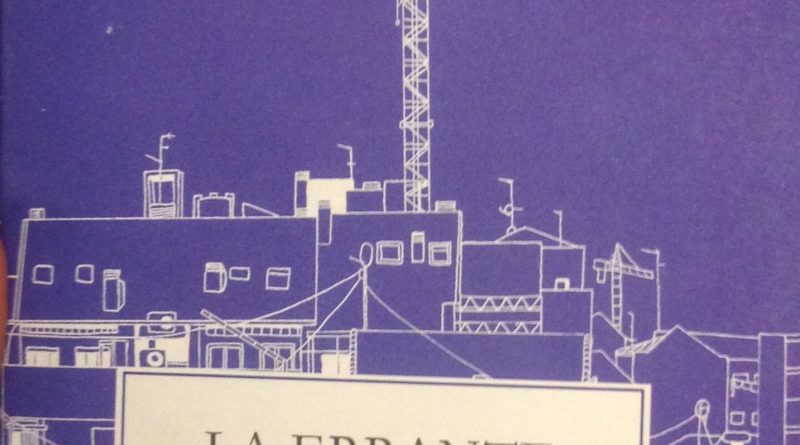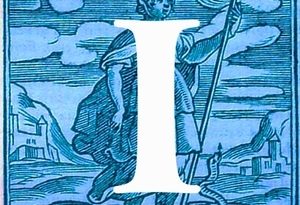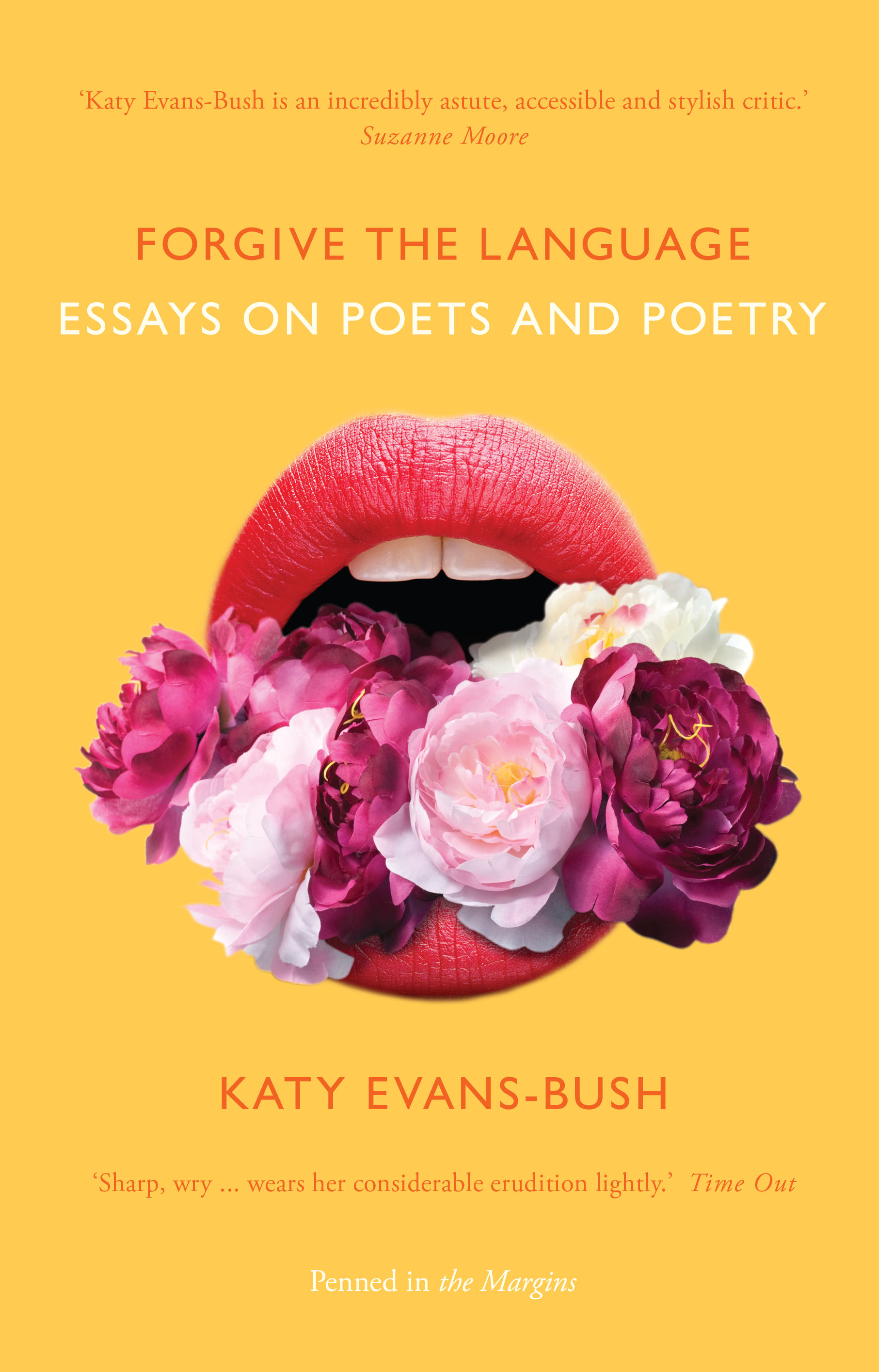La Errante #1
-Reviewed by Jenna Clake-
La Errante, a new multi-lingual zine of poetry and illustration, unfolds like album artwork to reveal a poster sized collaboration of art and poetry. The editors explain that ‘words and pictures are on equal footing’ in the journal. Everything is cohesively blue and white with touches of black. Word and image sit side-by-side, but also intersect: Fiona Sampson and Rikardo Arregi’s poems are placed over a large, thick, sweeping brushstroke. ‘Errante’ translates to ‘wandering’ in English, and these large brushstrokes and artworks lead the reader’s eye across the page.
The journal is a collaborative project between a group of writers, editors, artists and booksellers working between Madrid and London, but the contributors also have Singaporean, Italian and Chilean heritage. Where the work appears in its original language, a translation is placed alongside. In some cases, the poems are bilingual. Livia Franchini’s untitled poem is written in both Italian and English. In the poem, both languages are integral to the speaker’s identity:
Cari cari I miei cari,
o dear me, il caro vita,
non c’è lavoro, she still lives at home,
I tick the box for ‘visiting family’
Dear mother, I worry the time is coming
when I’ll no longer see you shouting at the telly –[…]
Cara, cara, daughter dearest,
tutto quell che è buono si scolora in bianco
white dots in oil, I slot this fish back
into its chilly bed, 10 degrees colder
Dear father I am sorry I made you carry
another tired bag into this empty flat
We see that the Italian language, Franchini’s mother tongue, is central to the speaker’s sense of belonging with her family. Though leaving home is necessary ‘she still lives at home’ seems to be imbued with a sense of shame. However, there is a deep sadness and homesickness too, as though the new home is lonely and not what the speaker expected:
Caro diario, I write to you
From this welcoming land today
All I ate was cold beans
This introduces a theme that recurs in the journal: isolation. The artwork does not always immediately seem to relate to the poems (this is not an ekphrastic journal, after all), but across the page Amanda Baeza’s artwork depicts a simian-like woman alone in the departures lounge of an airport. Baeza’s work complements Franchini’s poem subtly.
Isolation returns in Ella Webb’s artwork. Three figures are lost in a sea of indistinct shapes, perhaps lost on the side of a mountain. In Andres Lozano’s illustration, a man prostrate on the sofa is surrounded by paintings, records, a keyboard, notebooks and pens. There is a sense of contentment in this solitariness: a cat happily sleeps by the man. Toby de las Rivas’s poem sits adjacent to the illustration. The speaker of Martinez de las Rivas’s poem is alone with his thoughts:
One day, I shall have to give an account
of my self with my knees couched
in dirt & the great cities tumbling like stars.
If not to hím then to that portion of my
self that holds the rod & sits in judgement.
Reflections on identity and culpability are apparent in the poem: the emphases on ‘my’ stress the speaker’s need to find meaning, to understand the world. The speaker struggles throughout the poem, and addresses himself in exasperation: ‘This is so fucking point-/less, Tobe.’ Ultimately, there is a sense of self, even if it is only indistinct, that ‘you are not theirs’. The speaker of Fiona Sampson’s ‘Saw’ is encompassed by her isolation:
trespasser with a chainsaw
going into the arena
blindfold not seeing how
its space opens round you tier
after tier how could you not feel
darkness watching from between
the trees willing them to fall
toward you no visitoris welcome unannounced their home
is not your home
Isolation takes on a nightmarish presence in this poem, but we are told that ‘we cannot dream it’. The poem, then, enacts a sort of trap, drawing us into this disturbing world and refusing to allow us an escape. The speaker’s isolation is all-consuming and terrifying.
Patricia Esteban’s ‘Readers’ is a prose poem that ironically explores the idea of being a famous poet:
Two of my friends stopped talking to one another because one of them was sure that ‘the branches swayed by the wind’ in one of my poems were those of the poplar in her garden, whereas the other insisted on the exclusive inspiration of her willow. And after reading my fourth book my hairdresser, one of my sharpest readers, refused, very politely, to carry on cutting my hair.
Esteban’s poem is full of irony, ridiculing the idea of fame by locating it in the close confines of her own neighbourhood. It is Absurdist in its humorous and exaggerated interactions, especially when the speaker’s neighbours and friends are extremely petty. The speaker notes that ‘they would strike strange poses or else every now and then blow cigarette smoke into my face’. For this speaker, fame – however specious – is isolating.
Layla Benitez-James’ ‘Fire Hazard Barbie’ is idiosyncratic and delightfully dark:
Fire hazard Barbie leaves a tortilla in the toaster-oven until it puffs up so high it touches
the red heating coils and bursts into flames.Fire hazard Barbie lights her life with old bare bulbs and flocks of candles. She loves
the frayed wires, marvelous mimosa blossoms, loves her lava-colored country, loves
the lullaby of its promised apocalypse.
Fire hazard Barbie is wonderfully reckless and unrecognisable in the poem. Her name is repeated frequently to highlight this dichotomy between the well-established image of the toy and this new incarnation. The repetition also builds to Ken’s frustration:
Fire hazard Barbie knows that Ken will try, and that his tiny plastic ax will not make a dent
in any door,again and again, it will not make a dent,
it will not make a dent, again and again,
forever
The repetition here mimics the futility of Ken’s attempts to reach Barbie, and this is utterly pleasing: we are left with an image of Fire hazard Barbie enjoying or destroying her life in the exact manner she wants to.
In such limited space, La Errante triumphs in presenting cohesive artwork, translation, bilingual poetry and writing that intertwines and complements each other so well.




